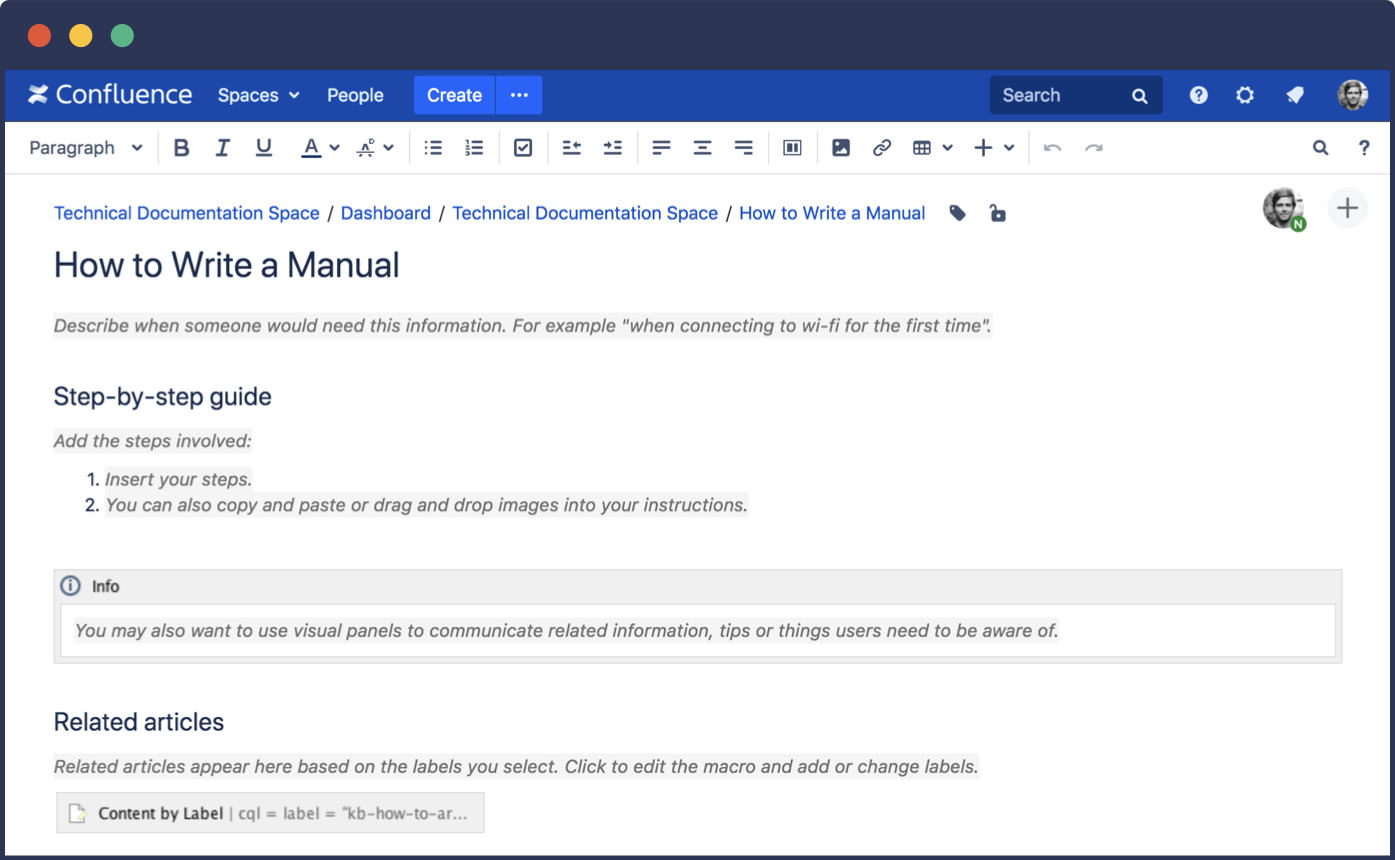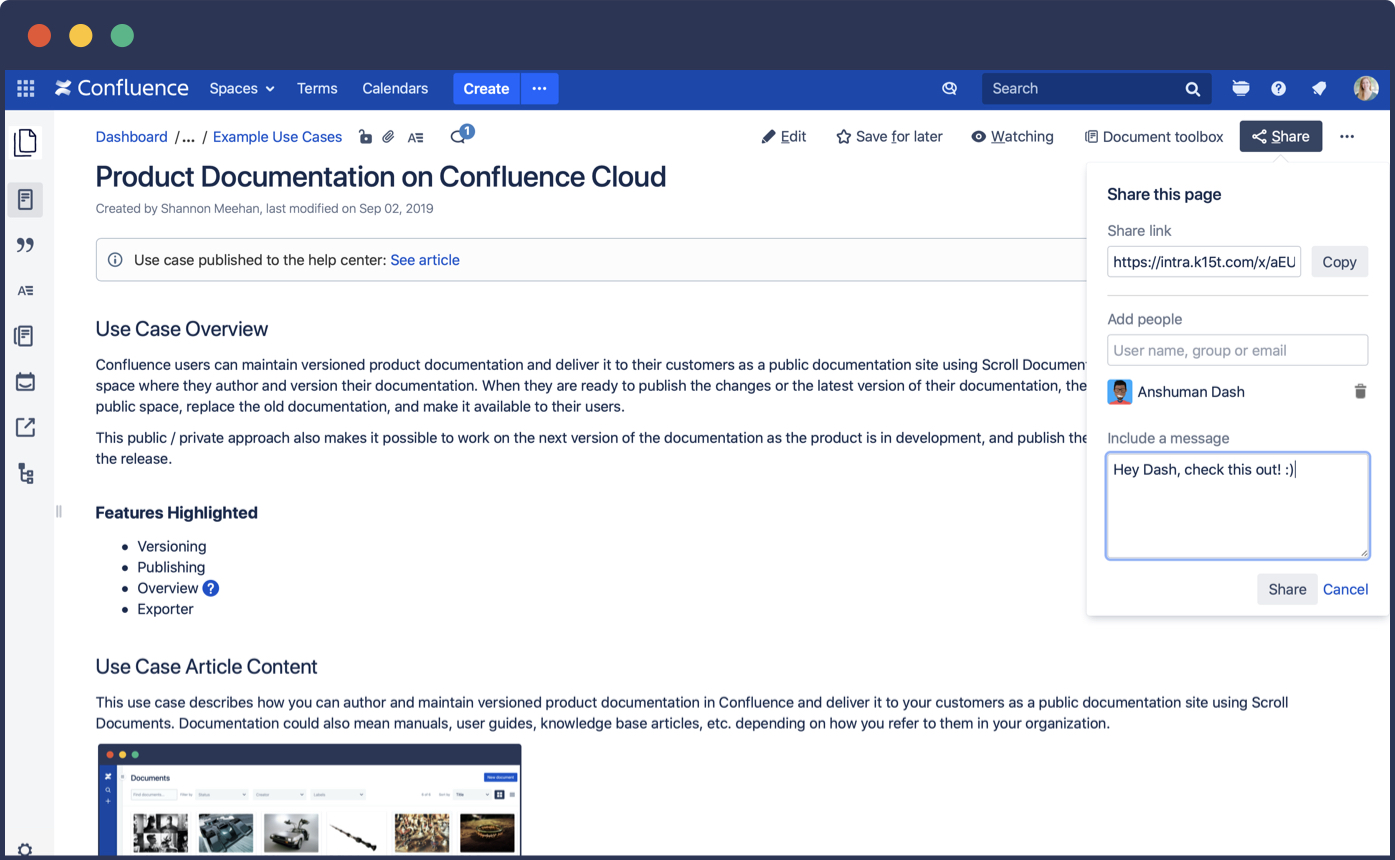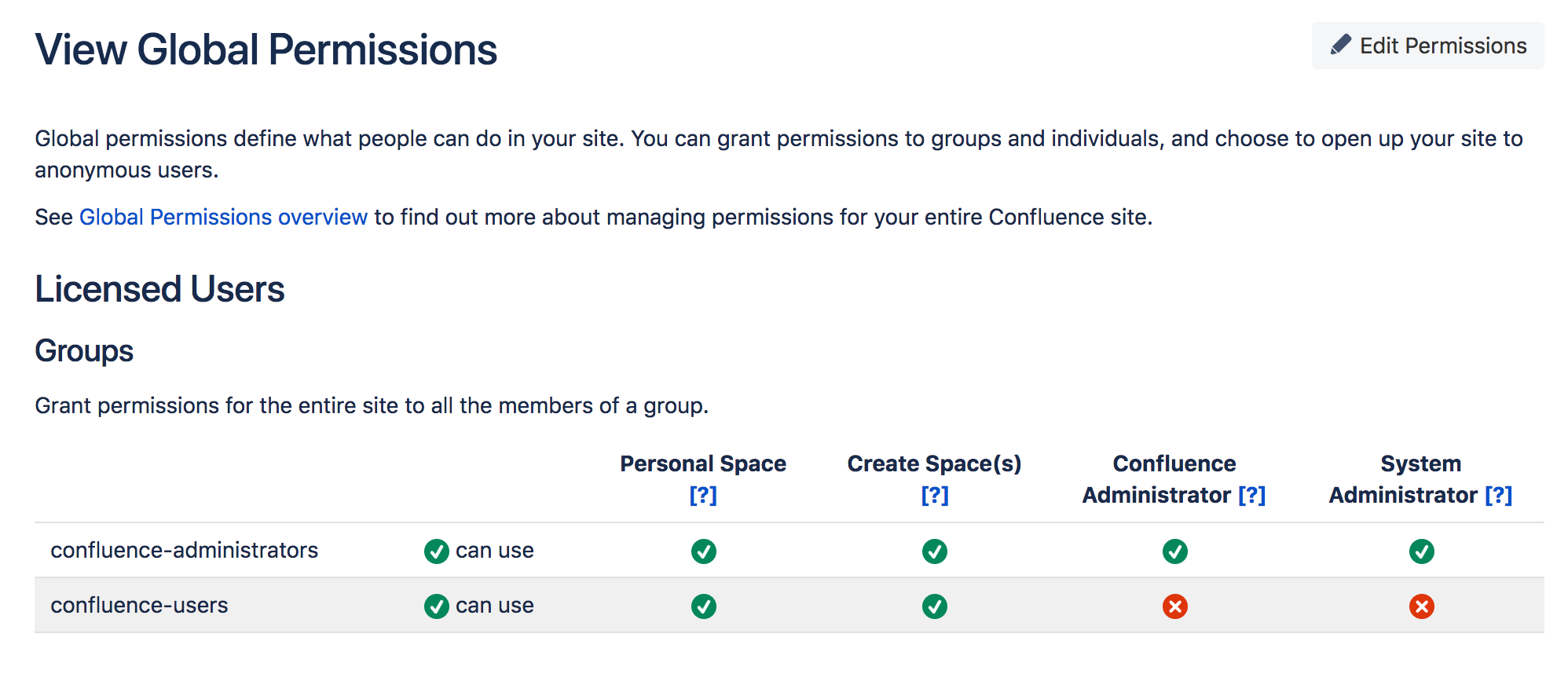When technical writers meet at conferences, one of the very first questions is usually: “Which help authoring tool do you use to produce help content?” And that question is swiftly followed by “And which tool would you like to use instead?”
At this point, most people within the techcomm community expect an answer like “FrameMaker”, “Flare” or a CMS. But when they ask Nils Bier, technical writer at K15t, he baffles them with his response. “We use Confluence, the enterprise wiki and team workspace, combined with our latest Scroll Apps. And as for the second question – Confluence is also my favorite tool for managing help content and product documentation.” Here's why.
#1 – Confluence Can Be Used Company-Wide
At K15t, we use Confluence in all of our departments. All employees share relevant information within internal Confluence spaces. Developers organize their specifications and record their design decisions in Confluence. The next logical step, then, is to use Confluence to manage support and product documentation. You can see our Confluence-based help center here.
Because we think it’s so important to have a Confluence user account, all new K15t employees are given one at the same time as they receive their personal email addresses. This means every employee at K15t has a Confluence user account from day one – so they can access the wiki and help to contribute to, develop and improve the documentation. And it works: we all collaborate in the same tool! This wiki platform makes it easy for everyone to share, comment, and improve content. The same applies to our product documentation in Confluence.
And Nils knows that it doesn’t stop there. “We even use Confluence to manage content for our website and blog." It's true! The blog post you're reading right now is delivered from Confluence by Scroll Viewport.
#2 – Confluence Works as You Expect
Anyone who has seen Confluence once knows how to use it almost instantly. And unlike other wiki engines, Confluence truly inspires users to work with it. Confluence has a clean user interface and an editor that works in a very similar way to common desktop publishing (DTP) software or word processing tools, such as Microsoft Word.

New users require very little training before they’re ready to work with Confluence – in contrast to complex help authoring platforms. They just get going – and pretty soon, all new Confluence users write, comment and share like a pro.
Confluence provides page templates (e.g. for meeting notes or custom page templates for support documentation) to help users develop content quickly and consistently. This is a great way to ensure consistent page structures and content. But when authors decide to go beyond their templates, they can do that, too.
Nils loves this. “Confluence allows me to structure my content – but at the same time, it gives users the freedom to be creative.”
#3 – Confluence Allows You to Engage Colleagues and Readers
Sharing Confluence pages with colleagues is simple. You can share the latest version of a page in the documentation in a matter of clicks. At K15t, staff members often leave comments on pages as a way of sharing their insights. Everyone watching the page receives a notification when a comment has been added.

But Nils’ favorite social feature of Confluence is the “Like” button, which is similar to a Facebook like. The user clicks “Like” to confirm that everything on the page is correct, and no further improvements are required.
Wikis like Confluence make it far easier for everyone to collaborate than typical help authoring platforms, which are only suitable for tech writers. In most cases where companies don't go the wiki way, content has to be exported from the CMS for review by colleagues from other departments. And once they’re done, their annotations and change requests have to be re-imported and processed manually.
Want to learn more about creating documentation collaboratively in Confluence? Read the guide →
#4 – Confluence is Web-Based
You don’t need to install anything on your computer to work in Confluence. All you need is your favorite web browser (such as Chrome or Firefox) and your personal user account. All content is managed centrally on your corporate Confluence server, or you can go the Cloud route with Confluence Cloud. This means everyone in your company has access to the latest information and can update, share and contribute content – anytime, anywhere: at headquarters, a branch office, or even when on a business trip.
Nils is a fan of Confluence's web-based approach: “I no longer need to worry about updating my local help authoring toolchain, because Confluence is the only content management tool our administrators have to keep up to date."
#5 – Confluence Offers Full Transparency When Creating Content
The idea behind wiki-based collaboration is enabling anyone to contribute and provide free access to the knowledge inside. Users can watch and compare pages to arm themselves with the latest corporate knowledge and observe how content evolves. The documentation literally grows before one’s very eyes.
But sometimes it doesn’t make sense to share information with all employees. With this in mind, Confluence lets you restrict access and includes fine-grained rights and role management. You can easily define who is allowed to read, edit or leave comments on each page or space, for instance.

#6 – You Can Customize Confluence to Fit Your Use Case with Some Great (Scroll) Apps
Confluence is not a content management system (CMS) as such. But it is an extensible platform – and there is a huge range of apps to fit your use case, e.g. managing content for technical documentation. For instance, Scroll Versions brings concurrent versioning and variant management to Confluence Server and Data Center, and bridges the gap between a full-blown CMS and an easy-to-use wiki. If you're a Confluence Cloud user, Scroll Documents enables you to control versions, track changes and manage your content development workflow as a documentation team.
Nils adds: “I can’t actually imagine working without these Scroll Apps for Confluence anymore. They save me so much time – time that I can now spend writing, instead of copying and managing my help content manually.”
Did you know that you can also publish your Confluence documentation as a help center?
Watch the webinar to learn how and why we built our own help center on Confluence.
#7 – Confluence Is Ideal for Agile Environments
Like many software companies, K15t follows the agile development paradigm. Support documentation, like products, evolves iteratively within sprints and releases. As release cycles become shorter and shorter, technical writers need to keep pace. This is only possible if everyone in the team works with the same tool, where they can contribute information and give instant feedback on help content.
Nils describes his workflow for releasing documentation. “I work on the next version of our documentation, and when our developers get the product release out of the door, I simply publish and update my help content using Scroll Versions. It only takes a few clicks.”
Learn more about agile documentation and Confluence best practices on Rock the Docs →
Conclusion: More Use Cases (And Reasons) to Come
Confluence started out as a knowledge management and collaboration platform. Users came up with ways of leveraging that platform for other use cases, and attracted new audiences. And in the same way, the number of reasons for using Confluence for technical documentation is increasing on a daily basis – with each new Confluence release, and with every new app that arrives on the Atlassian Marketplace.
What are your reasons for using or evaluating Confluence for technical documentation? And where do you see the advantages in comparison to traditional help authoring tools? Please leave a comment and let us know!
If you have any questions, don't hesitate to email us at hello@k15t.com .